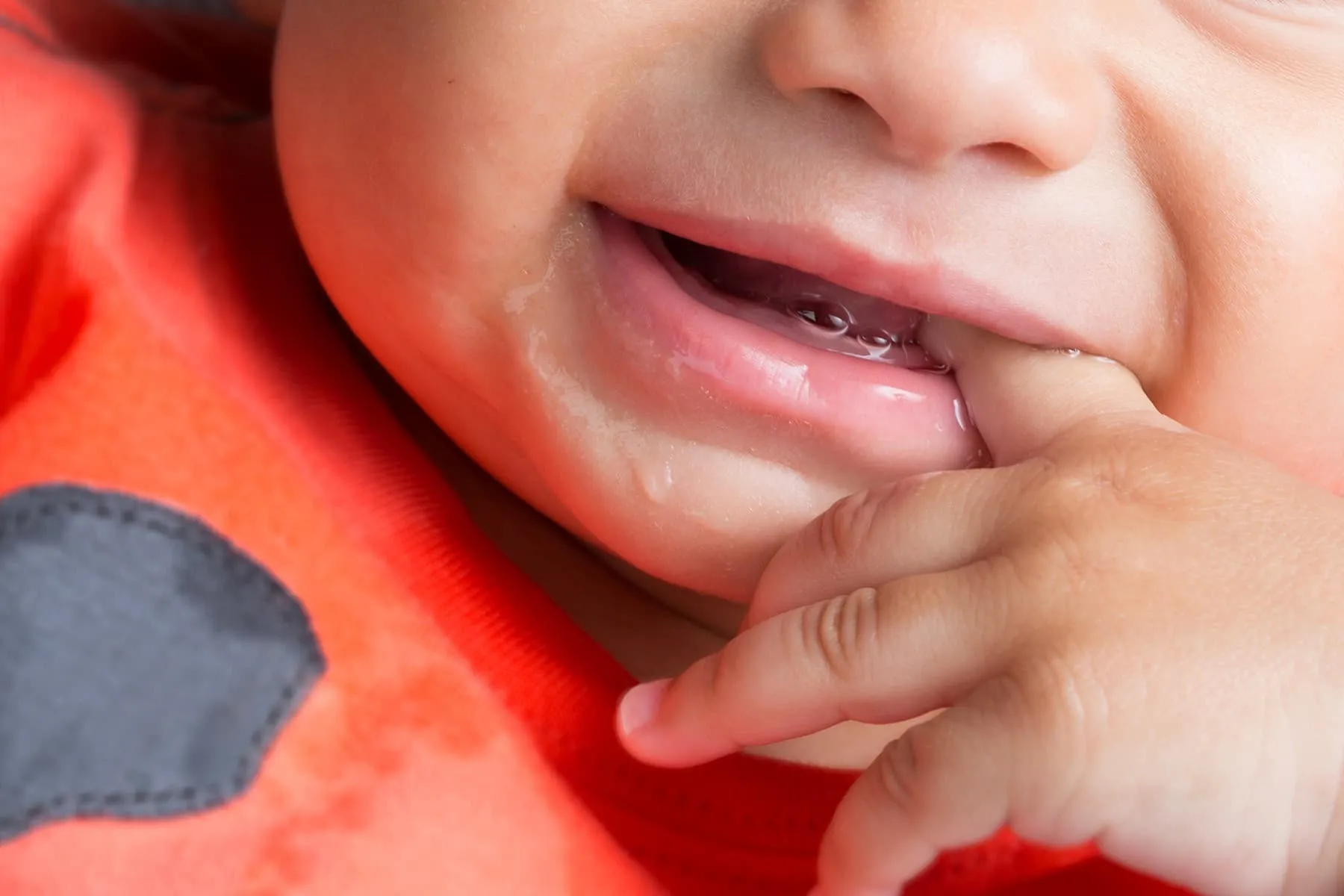
The period of teething in infants is often a time marked by a combination of anticipation and apprehension for parents. As those tiny pearly whites begin to emerge, a variety of symptoms are commonly attributed to this natural developmental stage. Among the most frequent concerns are questions surrounding whether teething can genuinely cause a fever or lead to more significant illnesses. This widespread belief often leads parents to attribute almost any sign of discomfort or slight deviation from normal behavior to the eruption of new teeth. However, understanding the scientific and medical consensus on this topic is crucial to avoid misattributing more serious health issues to a normal physiological process. While teething can certainly bring about localized discomfort, the extent to which it impacts a child’s overall health, particularly in terms of systemic symptoms like fever, requires a nuanced examination. Disentangling the folklore from the facts helps parents better assess their child’s condition and seek appropriate medical attention when needed, rather than dismiss concerning symptoms as mere teething woes. The question of can teething cause fevers or illness is more intricate than it first appears, demanding a clear distinction between mild local reactions and actual signs of infection.
Localized Symptoms Are Expected: Redness, Swelling, and Irritability
When considering teething, localized symptoms are expected, often manifesting as redness, swelling, and irritability. As a tooth pushes through the gum tissue, it causes a natural inflammatory response in that specific area. This can lead to the gums around the erupting tooth appearing red, swollen, and tender to the touch. This discomfort is precisely why babies might be seen rubbing their gums, drooling excessively, or showing a reduced appetite. Their sleep patterns might also be disrupted due to the persistent, low-level ache. Some babies might develop a mild rash around their mouth or chin from increased drooling, a common consequence of saliva irritation rather than a systemic reaction. These symptoms are confined to the oral cavity or immediate facial area and are generally considered normal, albeit uncomfortable, aspects of the teething process. They reflect the physical process of tooth eruption and are distinct from widespread bodily reactions, such as an elevated core body temperature or generalized illness.
Scientific Consensus on Fever: Low-Grade, if Any
The scientific consensus on fever during teething is quite clear: it’s typically low-grade, if any. Extensive research and medical bodies, including the American Academy of Pediatrics, generally conclude that teething does not cause a true fever, defined as a body temperature of 100.4°F (38°C) or higher. While some babies might experience a slight elevation in temperature, perhaps up to 99.9°F (37.7°C), this is usually attributed to the mild inflammatory response in the gums and is not considered a true fever. A temperature exceeding 100.4°F (38°C) should not be automatically attributed to teething and warrants investigation for another cause. Attributing a high fever solely to teething risks overlooking a more serious underlying infection, such as an ear infection, a urinary tract infection, or a viral illness. Therefore, while mild temperature changes might coincide with teething, a significant fever should always prompt a call to the pediatrician for proper diagnosis, as it’s highly unlikely to be the sole symptom of tooth eruption.
The True Culprits: Concurrent Illnesses Often Coincide
Often, the timing of teething coincides with periods when infants are naturally more susceptible to various infections, making concurrent illnesses often coincide and masquerade as teething symptoms. Around 6 to 12 months of age, when teething typically becomes more pronounced, babies are also exploring their environment by putting objects into their mouths. This hand-to-mouth exploration, while a crucial developmental stage, inevitably exposes them to more germs and viruses. Furthermore, infants at this age are experiencing a decline in maternal antibodies, making their developing immune systems more vulnerable. It’s not that teething causes these illnesses, but rather that infants are already prone to common childhood ailments like colds, ear infections, or stomach bugs during this period. When a baby is teething and simultaneously develops a fever or diarrhea, it’s statistically more probable that these systemic symptoms are due to an unrelated viral or bacterial infection, simply coinciding with the eruption of a new tooth. This overlap means parents must exercise caution and not dismiss legitimate signs of sickness as mere teething discomfort.
Distinguishing Symptoms: What to Look For Beyond Gums
Learning to distinguish symptoms is vital, knowing what to look for beyond gums. While localized gum tenderness and increased drooling are tell-tale signs of teething, other symptoms should prompt further concern. A true fever (above 100.4°F or 38°C), persistent diarrhea, vomiting, a significant loss of appetite, widespread rash, or general lethargy are not typical teething symptoms. These indicators suggest a systemic illness that requires medical evaluation. For instance, while some parents report loose stools during teething, persistent, watery diarrhea, especially if accompanied by fever, indicates an infection. Similarly, while a baby might be fussier during teething, extreme irritability, inconsolable crying, or a marked change in behavior could point to an underlying issue. Relying solely on teething as an explanation for these broader symptoms can delay diagnosis and treatment for conditions that genuinely require medical attention. Therefore, understanding what to look for beyond gums empowers parents to make informed decisions about their child’s health.
Addressing Gastrointestinal Changes: The Drooling Connection
When observing addressing gastrointestinal changes, it’s important to consider the drooling connection. Many parents report increased drooling during teething, which is a normal response to gum irritation and the stimulation of salivary glands. While this excessive drooling might sometimes lead to slightly looser stools, it is generally not a cause of significant diarrhea. The idea that teething directly causes diarrhea or vomiting is largely anecdotal and lacks strong scientific backing. If a child experiences persistent, watery diarrhea or vomiting during teething, it is far more likely due to a viral or bacterial infection rather than the teeth themselves. The increased saliva might also be swallowed more frequently, which can slightly alter stool consistency, but it rarely leads to severe gastrointestinal upset. Therefore, while minor changes in stool might occur due to increased saliva intake, genuine gastrointestinal distress requires careful assessment, as it points to a cause beyond simple teething.
Comforting a Teething Baby: Symptom Management
Focusing on comforting a teething baby through symptom management is the most effective approach. Since teething primarily causes localized discomfort, strategies should focus on alleviating gum pain. This can include offering chilled (not frozen) teething rings or pacifiers for them to chew on, providing a gentle gum massage with a clean finger, or using a clean, cool washcloth for them to bite. Over-the-counter pain relievers specifically formulated for infants, such as acetaminophen or ibuprofen, can be used as directed by a pediatrician for more severe discomfort, ensuring proper dosage based on the child’s weight and age. Avoiding remedies like teething necklaces, which pose choking and strangulation hazards, or topical gels containing benzocaine, which can have serious side effects, is crucial. The aim is to provide soothing relief for the localized irritation without resorting to unproven or potentially harmful methods. Effective symptom management helps the baby cope with the temporary discomfort, allowing them to eat, sleep, and play more comfortably during this developmental phase.
When to Seek Medical Advice: Red Flags to Heed
Knowing when to seek medical advice means understanding the red flags to heed. While mild fussiness and drooling are normal, certain symptoms indicate a need for professional medical evaluation. A fever of 100.4°F (38°C) or higher, especially in infants under three months of age, always warrants a doctor’s visit. Persistent diarrhea, vomiting, reduced wet diapers (a sign of dehydration), or a significant decrease in appetite are also concerning. If a baby appears unusually lethargic, unresponsive, or is experiencing difficulty breathing, immediate medical attention is necessary. Any rash that spreads or seems more than mild drool irritation should be checked. If you are ever unsure whether a symptom is related to teething or something more serious, it is always best to err on the side of caution and consult your pediatrician. These red flags to heed ensure that genuine illnesses are not overlooked, allowing for timely diagnosis and treatment.
The Immune System’s Role: Not a Direct Cause
It is important to understand the immune system’s role, which confirms teething is not a direct cause of systemic illness. The process of a tooth erupting through the gums is a localized inflammatory event, not one that triggers a systemic immune response strong enough to cause fever or widespread illness. A baby’s immune system is constantly developing and encountering new pathogens, especially as they grow and become more mobile. Any illness experienced during teething is coincidental, stemming from exposure to viruses or bacteria. The body’s immune system reacts to these external threats, not to the natural process of tooth eruption itself. Therefore, attributing a significant illness to teething misunderstands the fundamental workings of the immune system and risks misdirecting attention from genuine health concerns. The localized nature of teething means it is not a direct cause of broader health issues related to the immune system.
Debunking Old Wives’ Tales: The Importance of Accurate Information
Challenging traditional beliefs and debunking old wives’ tales is essential for promoting the importance of accurate information. Generations have passed down the notion that teething causes high fevers, diarrhea, and even convulsions. While these beliefs stem from genuine parental concern and observation, modern medicine and research have largely disproven these direct causal links. Relying on outdated or inaccurate information can lead to complacency when a child is genuinely ill, delaying necessary medical intervention. Parents should prioritize evidence-based information from healthcare professionals and reputable medical organizations. Understanding the true scope of teething symptoms helps parents avoid unnecessary anxiety for mild discomforts, while simultaneously being vigilant for actual signs of illness. This commitment to the importance of accurate information empowers parents to make sound health decisions for their children, moving beyond folklore to embrace scientific understanding.
Long-Term Perspective: Understanding Developmental Stages
Taking a long-term perspective allows for understanding developmental stages more broadly. Teething is merely one of many complex physiological processes a baby undergoes in their first few years of life. During this period, infants are also developing their immune systems, exploring their environment, and interacting with new people and places, all of which expose them to various pathogens. Rather than isolating teething as a singular cause for all discomfort, viewing it within the broader context of a baby’s rapid growth and development provides a more realistic understanding. It highlights that mild localized symptoms are normal, while systemic signs of illness are likely attributable to other common childhood conditions. This broader understanding of developmental stages enables parents to maintain a balanced perspective, appreciating the temporary nature of teething discomfort while remaining attuned to legitimate health concerns that warrant professional medical attention.
